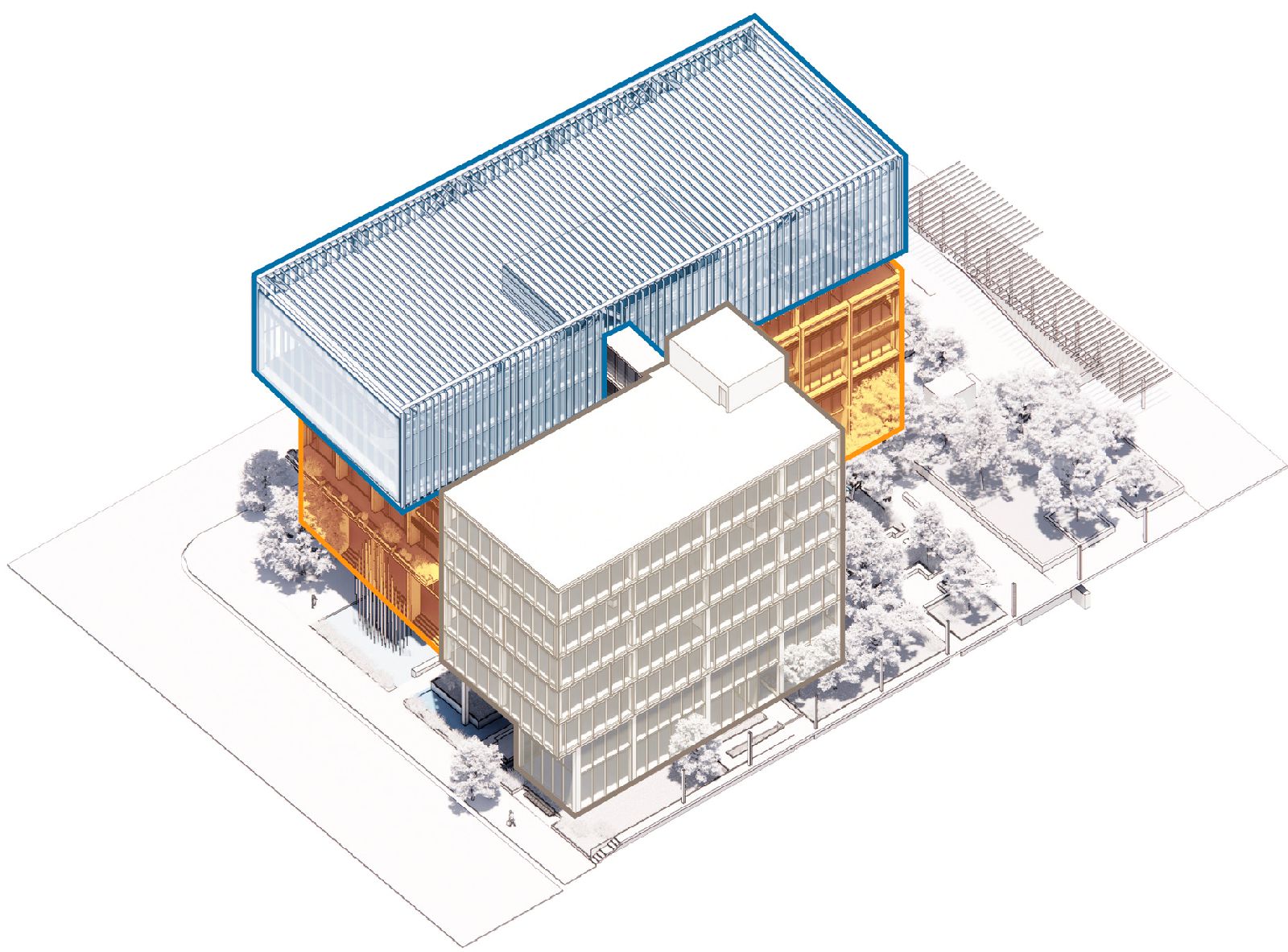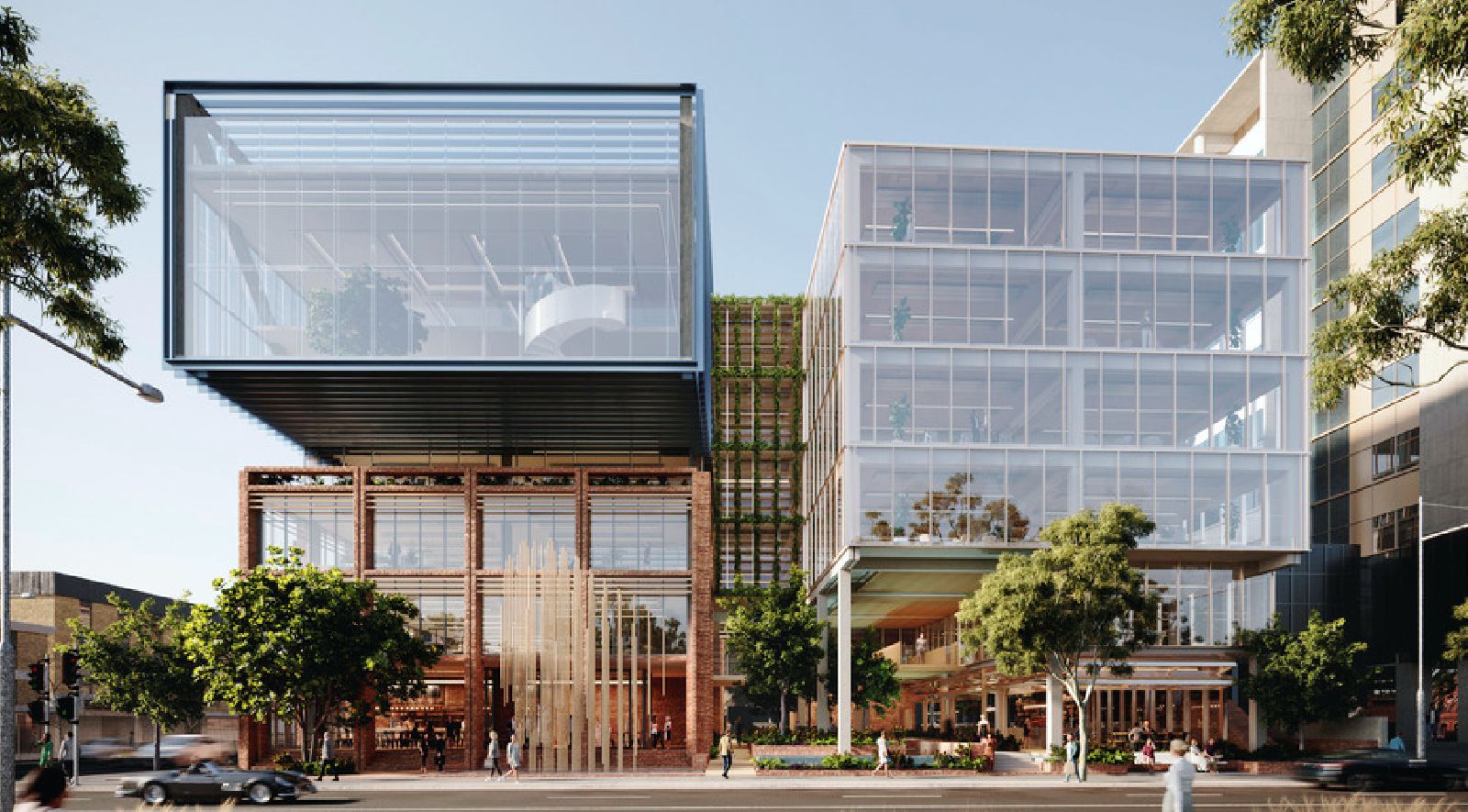The site of the former Penrith Council Chambers is being redeveloped as part of the revitalisation of the city’s CBD. The design scheme to redevelop the site is focused equally on community and the commercial to create a building that both benefits the public and delivers a commercially viable workplace of the future.
Key ideas
Three key ideas underpin the architectural design: being of its place, creating a landmark, and serving as an extension of the landscape. Architecturally, the form is composed as three distinct smaller forms, each of which emphasises one of the key ideas:

Axo
- Of its place
Set within a landscaped forecourt the former Council Chambers building (1959) was an example of the interwar Modern/ Functionalist style of architecture. The podium block form (base) of the new building speaks to the scale and materiality of the site’s former use. The brick façade is redolent of the former heritage building and of buildings with a public function. Bricks reclaimed from the heritage façade will be re-used in ground level planter walls.
- Creating a landmark
The upper tower is a simple rectangular form which floats over the masonry podium. The lightweight structure cantilevers over the historic forecourt further enhancing the significance of the corner site. Penrith serves as a gateway to the Blue Mountains, which are referenced in the colour of its glass and steel surfaces.
- An extension of the landscape
A future park is planned adjacent to the site. The scheme links the future park with an existing courtyard on the site by raising the third compositional element, a pavilion, to allow the green space to flow into and through the site, creating an urban oasis and reinforcing landscape as a design device to coherently integrate neighbouring buildings.
A contemporary workplace
This building is fundamentally different from conventional commercial buildings which tend to be uniform – uniform lighting, uniform air quality, uniform spatial experience. Woods Bagot’s proposal for Penrith’s new workplace deliberately moves away from this model. Deep analysis of both the progressive changes underway in workplace design and the impact of COVID-19 on how people work has generated Woods Bagot’s scheme for a diverse and adaptable, breathable workspace that promotes different ways of working for different people.
It will offer a diverse range of experiences where people can work one day in a garden in the sun, the next at a quiet indoor location and the following at a rooftop overlooking the park. To extend the workplace and cater for other uses, outdoor spaces are carefully considered for varied uses throughout different times of the day and year. Building on the wellness and sustainability tenets of the development, the key to its longevity is to design the building with flexibility, capable of adapting to changing user needs.
The three distinct forms allow the floors to be programmed separately or entirely, and create better natural ventilation than a uniform box. The floors range in size, orientation and outlook. The façades change across differing spaces, from solid brick, glassy and open, to more conventional glass façades with solar shading, creating a range of natural light outcomes that mean workplace experiences will be sensory, varied and diverse.

Image © Woods Bagot
Civic importance
A new forecourt will address the significant corner by stepping the brick building back at the lower four levels, and cantilevering the tower over to reinforce the grandeur of this public space. This new civic space is composed of a feature tree in a circular planter, terraced brick steps, water feature and public art.
Woods Bagot’s contemporary design response exemplifies permeability and porosity, which promote use and activity at street level. A network of streets and laneways will create links to existing paths and entries. Green space will flow through the site and connect it with the future park, creating a heart to the civic and education precinct. It will reinforce its place in civic life by providing a multitude of public uses. Source and images Courtesy of Woods Bagot.



